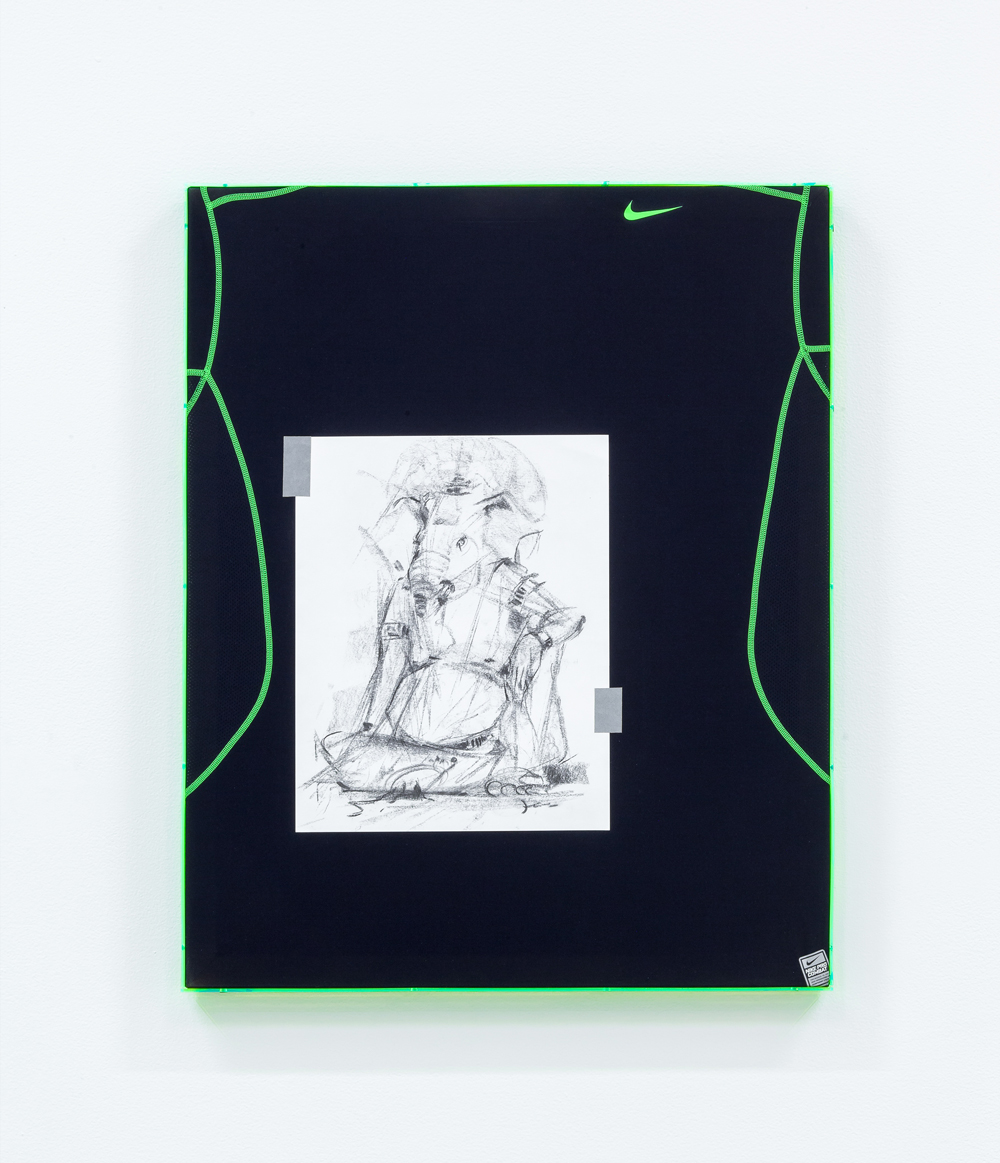Dark Velocity: Leveraging Ecological Volatility
Keywords: Agenda, Alisa Barenboym, Brace Brace, chinese, christopher kulendran thomas, contemporary art, Dark Velocity, dis, ecological volatility, exhibition, Finance, GCC, kenzo, mandarin, ryan trecartin, Seth Price, speculation, strategy, summary prospectus, Trisha Baga, Victoria Ivanova
Presenting 'Dark Velocity': capitalization rewired against ecological collapse.
Summary Prospectus: 28 October, 2014
招股说明书摘要: 28 October, 2014
翻译成普通话
Translate to English
黑暗速度
Dark Velocity1
黑暗速度
Dark Velocity1
Leveraging Ecological Volatility
利用生态波动
Trisha Baga
Alisa Baremboym
Brace Brace
DIS
GCC
Seth Price
Christopher Kulendran Thomas
Ryan Trecartin
1 礼貌 Gean Moreno
1 Courtesy Gean Moreno

This online prospectus contains information about the strategies and risks of Dark Velocity1, a program that offers a response to ecological volatility from within the field of contemporary art. Its agenda is based on an expanded understanding of ecology that integrates all existing infrastructures into a single operational system without drawing a line between “man-made” and “natural” processes/materiality.
Dark Velocity1 proposes that the proliferation of commodity forms offered by finance may serve as a productive model for providing resources required for addressing ecological volatility.
The concept of “ecological volatility” addresses the proliferation of the various ecological states caused by human impact on the environment. Meanwhile, measures that either neglect the state of affairs associated with the Anthropocene or aim at damage control for the short-term interests of privileged actors, may in fact be causing further positive feedback (e.g. by entrenching socio-economic inequality and contributing to the extinction of various species). Thus, ecological volatility is understood as a problem of planetary organization, requiring thinking and solutions that integrate all infrastructures into a single framework as opposed to seeking safety in pockets of presumed autonomy.
这个网上招股包含有关策略和风险的信息 Dark Velocity1, 展览的金融投资方案,提供从当代艺术领域内的响应生态波动。其议程是基于生态学的扩展理解,整合所有现有的基础设施,成为一个单一的业务系统,无图纸“人造”和“自然”的过程/物质之间的线。
Dark Velocity1 建议的商品形式由财政提供的增殖可以作为利用生态波动性的生产模式。
生态波动的概念解决造成人类对环境的影响,各种生态状态的增殖。同时,测量,要么忽视与人类世关联或瞄准损失控制在特权者,对短期利益的事务状态实际上可能会造成进一步的正反馈(例如,通过固守社会经济不平等和促进灭绝不同种类的) 。因此,生态波动性被理解为行星组织的问题,需要思考和所有的基础设施整合到一个单一的框架,而不是寻求安全的假定自治口袋的解决方案。

DIS, Watermarked, 2012 (video, 8:12 min on loop, color, sound, flat screen); Christopher Kulendran Thomas, from the ongoing work www.when-platitudes-become-form.lk, 2013 (wood, plasticine, sound and “Abstract Form” (2012) by Prageeth Manohansa (purchased from Saskia Fernando Gallery, Colombo, Sri Lanka), dimensions variable); GCC, Ceremonial Achievements in Motion, 2013 (video, 3:46 min on loop, sound, flat screen); Photo: Chris Kendall 2014.
OBJECTIVE
Dark Velocity1 pursues financial diversification from within contemporary art. The latter is structurally defined by its indeterminacy vis-à-vis ecology at large, sustained by the insistence on the proclaimed autonomy of (artistic) expression and (viewer) interpretation. Meanwhile, contemporary art’s strategies for engaging with ecological conditions are based on critique, disruption or exit, thus lacking in the systemic intervention necessitated by today’s condition of ecological volatility. Most crucially, contemporary art’s various claims to autonomy reaffirm the foundational tropes of today’s most dominant system of planetary organization – a form of governmentality that is dispersed through the individual, and which concentrates power by privatizing profits and socializing risks, thereby impeding the development of holistic strategies.
Dark Velocity1 proposes that integrative thinking from within the field of contemporary art must start from taking material conditions as the very basis of praxis. The underlying logic of the strategy is to inflect the mechanics of capitalization by rewiring existing technologies. Dark Velocity1 tests the viability of accelerating rather than resisting existing platforms through an unsentimental engagement with networked flows of power, value and desire.
目的
Dark Velocity1 追求从当代艺术中的金融多元化。后者是由它的不确定性VIS- à- VIS生态栈道,通过(艺术)的表达和(观众)解释的宣布自治的坚持持续的结构定义。同时,与生态条件从事当代艺术的策略是基于批判,中断或退出,从而缺乏系统性干预生态波动今天的必要条件。最关键的是,当代艺术的各种说法,以自主重申当今最具统治力的行星的组织系统的基础比喻 – 治理性的一种形式,是通过个体分散,它通过私有化利和社交的风险,从而阻碍整体的发展集中力量策略。
Dark Velocity1 建议在当代艺术领域内的综合性思维,必须从以物质条件作为实践的根本基础开始。Dark Velocity1 加速测试,而不是通过一个无情的参与与权力,价值观和欲望的网络流量抵制现有的平台,如融资的可行性。

PRINCIPLE STRATEGY
Dark Velocity1 aggregates practices and strategies that aid in diversifying modes of engaging with art and capital, expanding the former’s functions and the latter’s pools of beneficiaries. Each new iteration capitalizes on the infrastructures of exhibition-making in pursuit of this objective.
Currently, contemporary art’s economy is tied to the tradable art object, while viewer experience is considered central to art’s social functionality in so far as art works and exhibitions are officially presented as necessarily addressing themselves to “a/the public.” The invariability of contemporary art’s commodity form makes object-ownership (whether individual, corporate or institutional) hold crucial leveraging power in the field, thereby overshadowing the potential of financial diversification.
This status quo reinforces a regressive subject-object divide, which stands in the way of an integrative ecological agenda. This in-turn severely limits the potential of capitalization and financial leveraging from within the field of contemporary art beyond capital accumulation for private ends and distribution of privilege within professional networks of art and exhibition-making. As a result, while exhibition-making serves as an important mechanism for market movements, the full spectrum of institutional and financial possibilities remains suppressed.
原理策略
Dark Velocity1 聚合方法和策略,有助于多样化的艺术和资本参与,扩大了前者的功能和受益者,后者的池模式。每一个新的迭代利用了展览制作的追求这一目标的基础设施。
目前,当代艺术的经济是联系在一起的流通艺术品,而观众体验被认为是中央对艺术的社会功能,只要艺术作品和展览正式呈现为一定解决自己为“A /公众。 ”当代的不变性艺术的商品形式,使对象的所有权(无论是个人,公司或机构)持有在该领域关键的杠杆力量,从而掩盖了金融多元化的潜力。
这个现状强化累主客分化,代表在一个综合的生态议题的方式。这,反过来严重,超出资本积累的私人目的,并在艺术和展览制作的专业网络分布特权当代艺术领域内限制了资本和金融杠杆的潜力。其结果是,虽然展览制作作为市场走势的一个重要机制,体制和资金的可能性全方位仍然抑制。
Historically, the art market lacked two necessary criteria for financial diversification: access to price information and a more expanded (and imaginative) understanding of commodity forms. The former was impeded in part by a lack of a single market and in part by a lack of regulatory mechanisms that would structure the industry. Today, the emergence of contemporary art as a global hegemonic system with an infrastructural network of circulation and distribution provides the necessary condition for making price information readily available and regulatory standards a rational goal.
Meanwhile, folk speculation — understood as investment into artworks with the intention of boosting private returns by capitalizing on the opacity of the contemporary art system — has limited the horizons of finance within the field of contemporary art. Consequently, the artwork may serve as a loan security for privatized ends but not as an underlying for a wide spectrum of derivative products. Dark Velocity1 proposes that value-creation should not remain tied to the art object and its exchange, so that artworks and exhibitions could serve as underlying assets for derivatives and thus provide liquidity. Folk speculation is often confused with finance, in so far as both are future-oriented strategies for capacity building. However, while folk speculation is limited due to its exclusive interest in individualized future profit, finance, despite its bad reputation in socially-oriented circles, holds the potential for systemic interventions by expanding the readily available resources of the present moment.
The logic of finance provides a fertile ground for infrastructural arrangements constructed from within contemporary art that could procure liquidity for socially-organized structures necessitated by the condition of ecological volatility, thus exceeding the ad hoc interjections that characterize contemporary art today.
Dark Velocity1’s short-term strategy is to bridge the gap between the status quo and the vision outlined above. In the long-term this would imply revising orthodox ownership models and reorienting the popular economic mind-set away from accumulation.
For now, the essence of Dark Velocity1’s strategy is to divest the raison-d’être of exhibition-making from viewer experience, from sentimental and singular approaches to artistic/curatorial visions, and to recalibrate it by focusing on the occluded facets of cultural- and financial- capital-building that supports all exhibition-making.
Every new iteration of Dark Velocity1 will move closer to achieving its objective by repurposing the exhibition-making format as a portfolio for leveraging ecological volatility.
从历史上看,艺术市场缺乏两个必要条件的金融多样化:获取价格信息和商品的形式更为扩大(和富有想象力的)理解。前者阻碍部分由缺乏一个市场,部分由于缺乏监管机制,将结构的产业。今天,当代艺术的崛起为一个全球性的霸权体系与流通环节的基础设施网络提供了必要的条件,使价格信息一应俱全,并监管标准的合理目标。
与此同时,民间的猜测 – 理解为投资于艺术品与资本对当代艺术体制的透明度提高私人收益的意图 – 有当代艺术领域内的有限资金的视野。因此,艺术品可以作为私有化的目的的贷款的安全性,但不是作为一个潜在的广泛的衍生产品的范围。Dark Velocity1 提出价值创造,不应继续依赖于艺术对象和它的交流,让艺术作品和展览能够为衍生品提供流动性无蓄积,因此生态波动作为标的资产。
民间猜测往往混淆金融,只要两者都是面向未来的能力建设战略。然而,尽管民间猜测由于其个性化的未来盈利,财经独家利率尽管面向社会圈子内的名声不好的限制,保持着系统性的干预,扩大当下的现成资源的潜力。
金融的逻辑提供了从当代艺术,可能促使流动性的社会组织结构,超越今天所特有的当代艺术专案感叹词之内建成的基础设施安排了肥沃的土壤。
Dark Velocity1 短期战略是桥的现状和上面提到的愿景之间的差距。从长远来看,这将意味着修改正统的所有权模式和调整流行的经济思维定距积累。
目前,精华 Dark Velocity1 策略是从观众体验剥离存在的,raison-d’être 展览制作,从感伤和奇异做法艺术/策展愿景,并注重文化和金融资本建设的闭塞方面,它支持所有展 – 重新调整它决策。
每一个新的迭代 Dark Velocity1 会靠拢了再利用展览制作的格式聚合产品组合充分利用生态波动实现其目标。

Alisa Baremboym, Lox, 2010 (archival pigment inks on cotton, 72 ½ x 58 in); Ryan Trecartin, K-CoreaINC. K (Section A), 2009 (HD video, 31:20 min, color, sound, white carpet on walls and floor, HD flat screen monitor, four white office chairs, white conference table). Photo: Chris Kendall 2014.
PRINCIPAL RISKS
Although Dark Velocity1 makes every effort to achieve a long-term remodeling of contemporary art’s relationship to finance, Dark Velocity1 cannot guarantee it will attain that objective. The principal risks are:
- Ecological volatility may be too great and too all-encompassing for infrastructural remodeling from within contemporary art to provide sufficient leverage.
- Systemic reluctance to move away from the model of art object commodity exchange and pressure to keep the market unregulated and opaque. This would lead to ever-greater reliance on folk speculation.
- Adoption of regulatory mechanisms and greater access to price information could lead to a systemic shock, which may or may not lead to a crash of the contemporary art market.
主要风险
虽然 Dark Velocity1 力求实现当代艺术的关系的长期重建资金 Dark Velocity1 不能保证它会
到这个目标。主要风险包括:
- 生态波动可能会太大,太包罗万象的基础设施改造,从当代艺术中,以提供足够的杠杆作用。
- 全身不愿搬离艺术品商品交换和压力的模式,以保持市场不受监管和不透明。这将导致对民间猜测越来越大的依赖。
- 通过管理机制和价格信息的机会可能会导致系统性的冲击,可能会或可能不会导致当代艺术市场的崩溃。
PERFORMANCE
Dark Velocity1’s first iteration was held at CCS Bard Galleries (New York) from April 13 to May 25, 2014, featuring the work of Trisha Baga, Alisa Baremboym, Brace Brace, DIS, GCC, Seth Price, Christopher Kulendran Thomas and Ryan Trecartin.
性能
Dark Velocity1 第一次迭代举行 CCS Bard Galleries (New York) 从4月13日至5月25日年,2014年的特色工作 Trisha Baga, Alisa Baremboym, Brace Brace, DIS, GCC, Seth Price, Christopher Kulendran Thomas 和 Ryan Trecartin.

Christopher Kulendran Thomas, from the ongoing work www.when-platitudes-becomes-form.lk, 2013 (vertical blind, Untitled I (2012) by Pramith Geekiyanage (purchased from Saskia Fernando Gallery, Colombo, Sri Lanka), 305cm x 100 cm); Seth Price, “Painting” Sites, 2000-2001 (video, 18:12 min, color, sound); Christopher Kulendran Thomas, from the ongoing work www.when-platitudes-becomes-form.lk, 2013 (wood, acrylic, “Ganysh XII” (2010) by Prageeth Manohansa (purchased from Saskia Fernando Gallery, Colombo, Sri Lanka) and Nike Pro Combat compression shirt, 77cm x 61 cm). Photo: Chris Kendall 2014.
Dark Velocity1’s first iteration extended integrative thinking by treating exhibition-making as a confluence of present infrastructures. Contemporary art’s claims of autonomy, criticality and the supposed singularity of the artwork, were mobilized as status quo infrastructural arrangements to be reorganized for wider systemic effect, as means for restructuring agency in order to shift from a position of critical distance to one of instrumentalized enactment.
Dark Velocity1 的第一次迭代通过将展览,以此作为当前基础设施的融合扩展整合思维。自主性,关键性当代艺术的主张和艺术作品的所谓的奇点,被动员的现状,基础设施安排,重组为更广泛的系统性影响,因为装置,以便从临界距离的位置移动到工具化立法的一个调整机构。

PORTFOLIO MANAGER
Victoria Ivanova, Lead Portfolio Manager since inception.
黑暗速度
Capitalization rewired against ecological collapse.
翻译成普通话
Translate to English
Design & Code Jon Lucas


